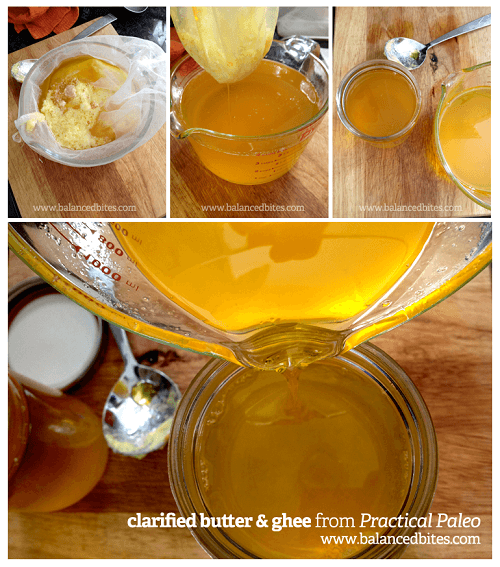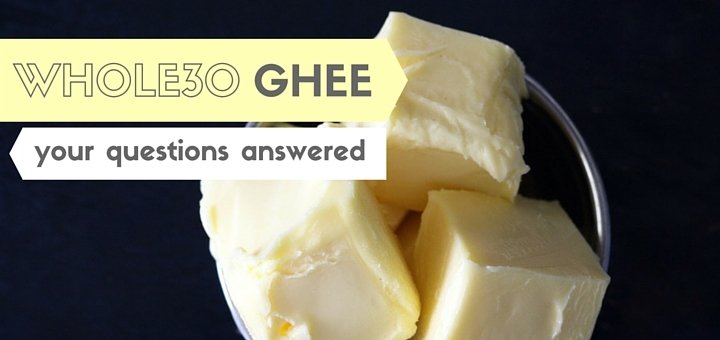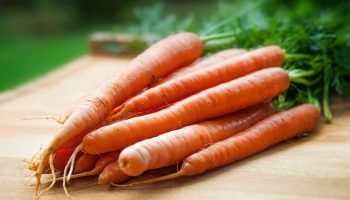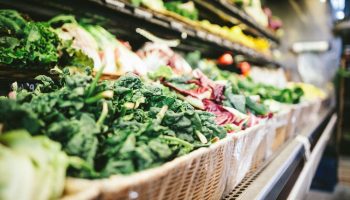If you have taken up an interest in the Whole30 diet program and you’ve begun researching some Whole30 approved recipes, you’ll likely have come across ghee as an ingredient.
Ghee is a type of clarified butter – butter that has had the milk fat rendered in order to separate the milk solids and the water from the butterfat. The butterfat, with the removed milk solids and water, is ghee.
Since ghee has the milk solids removed, it is dairy free (and Whole30 friendly).
Q: What is ghee?
A: As noted above, ghee is a type of clarified butter, consisting of butterfat which has had the milk solids and water removed from it. Ghee is actually the Hindi term for fat and in India, this ingredient is commonly used as an alternative to butter or cooking oil. Indians use this in sautéing spices, searing, and browning all types of meat. It’s also used in coating rice before cooking.
Similar with butter, ghee is solid at room temperature but can easily be melted when exposed to heat. Just like the spices in India, this ingredient is fragrant and also gives off a rich nutty taste that makes dishes a lot more flavorful.
Q: Is clarified butter the same with ghee?
A: At first glance, it may seem as if clarified butter and ghee are the same, but they are actually slightly different. What’s the difference? The difference lies in the way these two ingredients are prepared.
Clarified butter is prepared by separating the fat from the milk solids and evaporating water from the fat. On the other hand, ghee is created by simmering butter with the milk solids until they caramelize, then the milk solids are removed after the ghee has passed through the cheesecloth. Ghee also often has additional spices added to it, providing a richer, nuttier flavor.
Q: How can ghee be Whole30 approved if it came from dairy?
A: While ghee is made from butter which is a dairy product, the milk solids are removed during the ghee making process.
After separating the milk solids from the melted butter, the resulting product (ghee) would not contain lactose or antigenic proteins. Since ghee lacks the foreign proteins that the immune system targets, no allergic reaction to lactose takes place.
Q: Why should I use ghee?
A: The main reason why Indians choose ghee over butter is because it is perfect for high heat cooking since it does not burn easily.
In addition, ghee also offers plenty of health benefits. When it comes to nutrition, ghee has similar natural fat levels to coconut oil, making it a great energy source. Ghee is also rich in butyric acid, which helps in aiding digestion. Lastly, ghee contains high level of antioxidants as well as the soluble vitamins E and A.
Of course ghee’s other major advantage over butter is that it does not contain dairy, making it great for those trying to go lactose-free.
Q: Where can I buy Whole30 ghee?
A: There are many stores where you can buy Whole30 ghee, such as Whole Foods, Trader Joe’s, and some traditional grocery stores. You can also buy ghee in various websites online. If you wish to use and try high quality ghee product, the Whole30 program recommends ghee from Pure Indian Foods.
Q: What are the materials and ingredients needed for making ghee?
A: The cooking materials you will need to create ghee in your home are the following:
- Unsalted butter
- Dutch oven or any heavy bottomed pot
- A few pieces of paper towel or cheesecloth
- a slotted spoon (perfect for removing froth that forms at the top of solid ghee)
- a glass jar or any container for the finished product
Q: How do I make homemade Whole30 ghee?
A: If you do not like buying ghee from commercial stores, no worries – you can create your own! Here is a simple DIY ghee recipe to follow:
Step 1. Melt butter in a sauce pan placed over low heat.
Step 2. Continue cooking the butter until the milk solids have become brown. The milk solids should also start to sink at the bottom of the sauce pan.
Step 3. Allow the ghee to pass through the cheese cloth in order to remove the browned milk solids.
Step 4. Allow the remaining liquid to cool down before transferring it to your chosen container.

Step 5. You can store the resulting product in a refrigerator for up to one month.
For more information, please take a look at the Whole30 ghee recipe from Balanced Bites.
So there you go, all your ghee questions answered! Ghee is a common ingredients in many Whole30 recipes, so now you can cook with abandon! Have fun and enjoy your Whole30 program!





I applaud people for trying to get healthy! I applaud people for recognizing the serious problems in our current food system that contains a majority of processed foods. And, that which is not processed has been perverted (e.g. meats, milk, etc.) But, people, use some common sense. Stop redefining terms so you can cheat. The only reason dairy and meats are not excellent for the human body is because of our industrialized CAFO world. But, if you raise pasture fed animals (entirely, not grain finishing them), then you have incredibly healthy food sources for humans that you don’t have to strain out a gnat (so to speak) to eat. Just drink raw milk (and make butter from raw only), eat pastured meats (non-grain fed) and also make sure you have bought from a farmer who also doesn’t use pesticides and herbicides, etc. and you will find yourself healthier than ever without all these contorted diet practices everyone comes up with.
That said, it’s quite useful to temporarily take things out of your diet to let your body detoxify, e.g. taking all yeast products out for at least one week per year. Then go back to your normal healthy diet.
Oh yeah, and always leave refined sugars out (except the once in a blue moon dessert).
Hey Ryan! That’s actually what Whole30 is all about – eating clean meats, veggies, fruit, and avoiding processed junk. Like you said, removing certain food groups for limited periods of time can give you a chance to assess how certain foods sit with your body and digestive track, which is the entire point of Whole30.
So I think, despite your resistance, we’re actually on the same side! 😉
When making your own clarified Can the un-used part be used for anything after? Maybe for someone not on whole 30
Question: I buy ghee at Whole Foods. My label has disappeared . Does ghee from WF need to be refrigerated?
Gratefully, Marlene
What does it taste like?